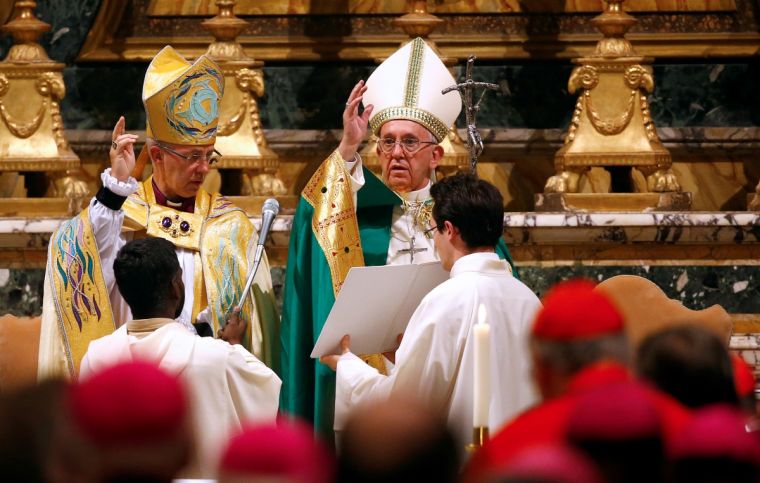Does this vote by the Church of England mean the end for the Bishop's Mitre?

The Church of England today embraced informal attire for all its clergy, known as 'dress down Sundays'.
Formal vestments have not been abandoned nor abolished – but it is now optional for clergy to wear traditional vestments at services such as Holy Communion.
Previously, many clergy, especially from the evangelical wing, ignored the law stipulating formal vestments at such services in any case.
The move came as a leading member of the General Synod and Archbishops' Council, Rev Dr Ian Paul, called for an end to episcopal mitres.
Writing on his blog, Psephizo, Dr Paul said: 'Why do Church of England bishops wear mitres? In our age of visual media, there is a tendency to reach for visual symbolism; it seems sometimes that those on television they don't think they are actually talking to a bishop unless the person is wearing a purple cassock. But there are many reasons for saying goodbye to mitres once and for all.'
Some people say the mitre derives from the shape of a fish, a symbolic acrostic, icthus, meaning Jesus Christ, Son of God, Saviour. Others also say it is from fish, but a pre-Christian Babylonian fish deity, not the Greek acrostic. Others believe it derives from the shape of the Pentecostal flame.
Mitres were not worn widely in the Church until the 10th century, and were discarded in the Church of Engand after the Reformation but restored to general use by the Anglo-Catholic revival of the 19th century. Beautiful ornate mitres, or 'crowns', have been worn for centuries by Eastern Orthodox bishops, and Catholic bishops also wear mitres.
There is a letter said by some to have been written by Polycarp in the fourth century that refers to the Apostle John wearing a mitre.
Mitres are not mentioned in the amended Canon agreed by the Synod today, but the vote for 'dress down Sundays' reflects a move away from formal attire.
Rev Alistair McHaffie of the Blackburn diocese said the aim was not to impose anything or anyone on any church: 'We are recognsing that many hundreds of churches have already dispensed with their robes and all we are doing is giving them permission to continue with our blessing.'
He said he had noticed the Archbishop of Canterbury wearing a blue pair of trainers at the Synod. Justin Welby, who once described himself in bishop's vestments as 'a self-propelled toadstool with a pointy hat', corrected McHaffie from the floor.
'They're not trainers. They're walking shoes,' he said.
Bill Braviner from Durham, also referring to Welby's footwear, said he was very pleased to note that the person 'leading our Church on its pilgrimage' has his walking shoes sorted. He also spoke of his regret at being at confirmation and other services where bishops and clergy had not been robed. He urged a 'two-way humility' where clergy who did not usually wear robes were willing to do so 'for the mission of the Church'.
Archdeacon Paul Ayers urged caution, and reminded the Church that parishioners had a right to traditional liturgy, including vested clergy. 'Whose option are we talking about?'
Bishop of St Albans Alan Smith said change was needed to account for society's 'fast changing culture'. If there is disagreement in a congregation about what their clergy want to wear, the matter could be referred to the bishop who would give guidance.
Chris Hobbs, a London priest, originated the motion and has spent many years waiting for it to be passed.
Listen to Ruth Gledhill debate whether the Church should abandon the bishop's mitre with Dr Ian Paul on BBC Radio 4's Today programme.











